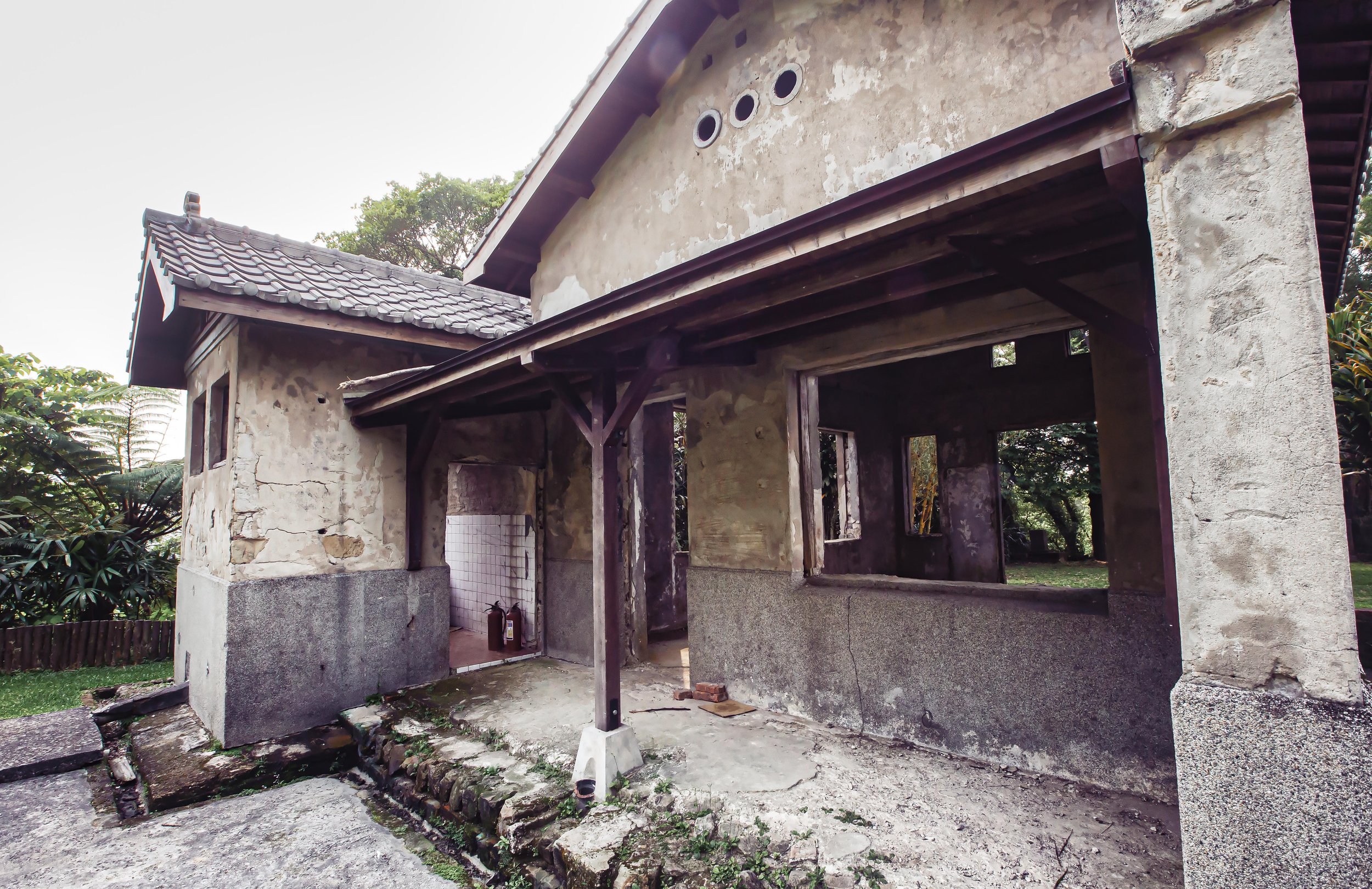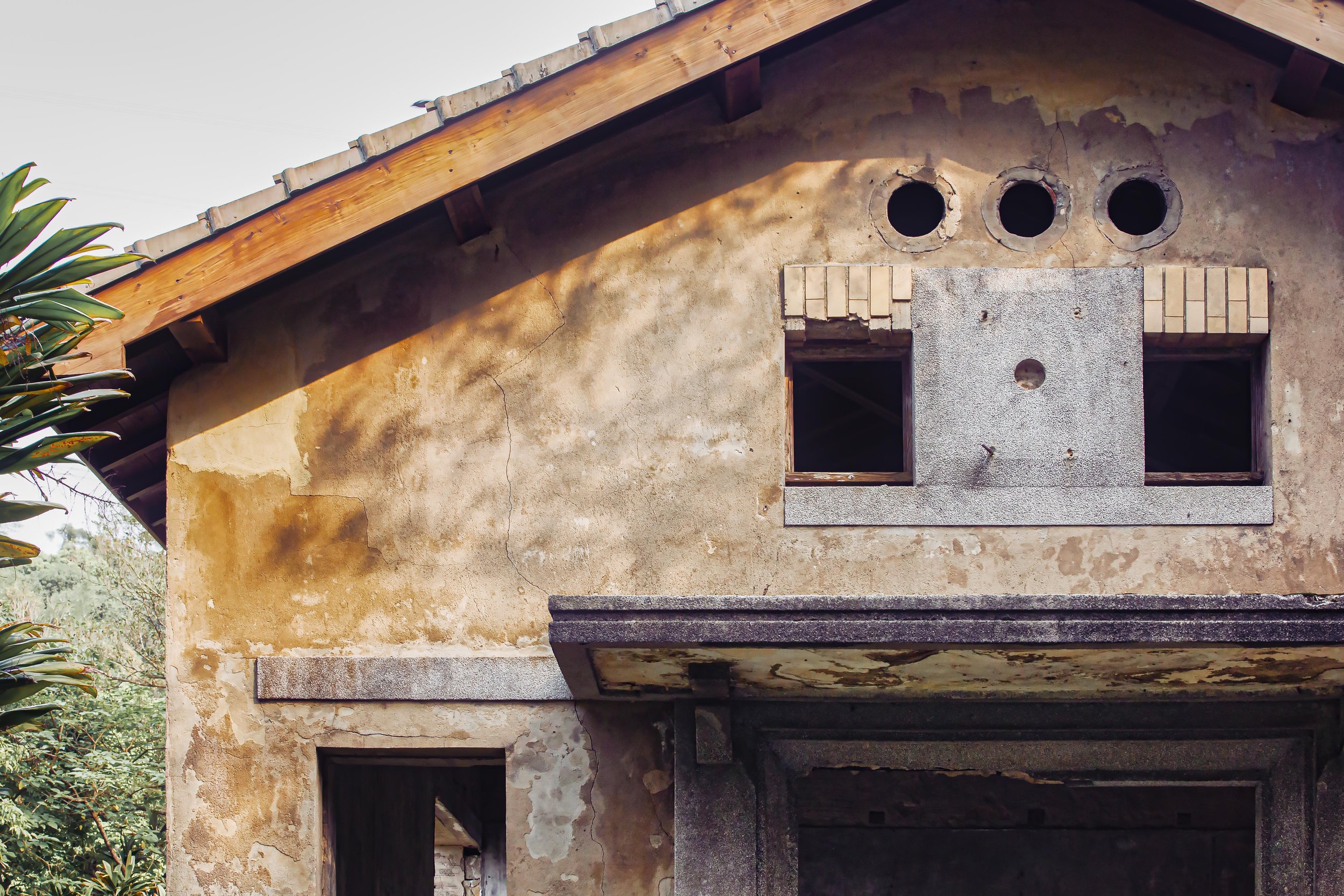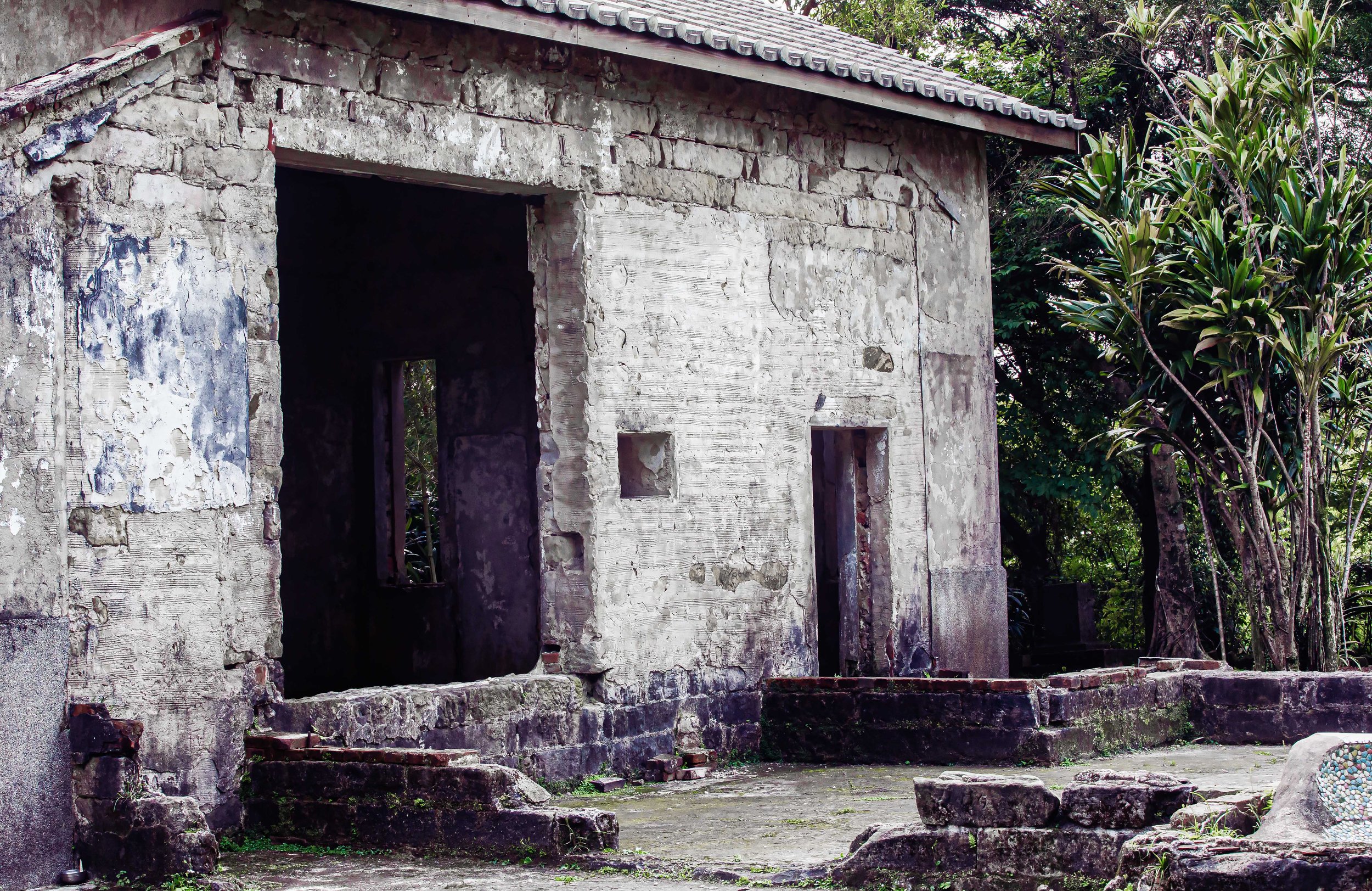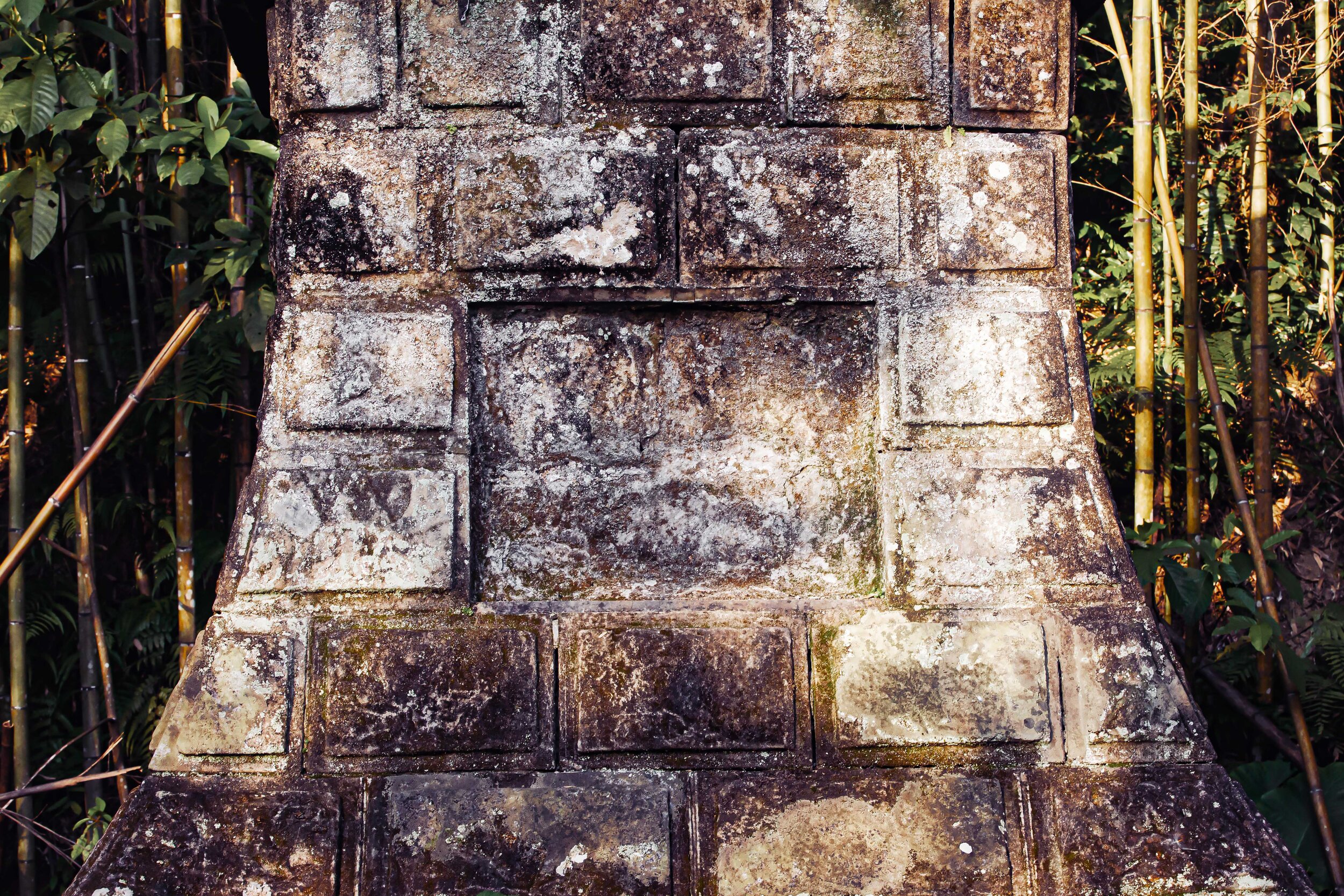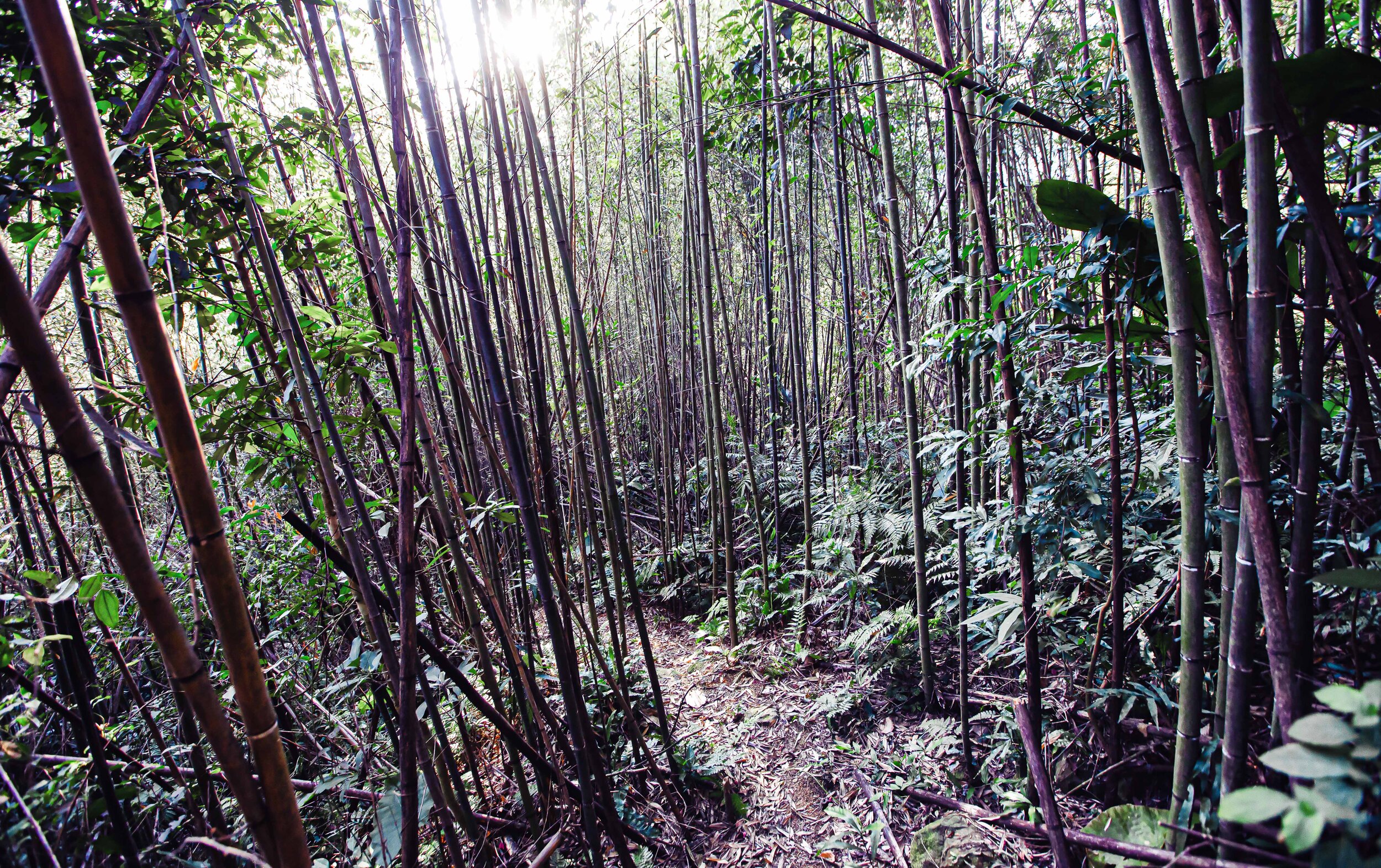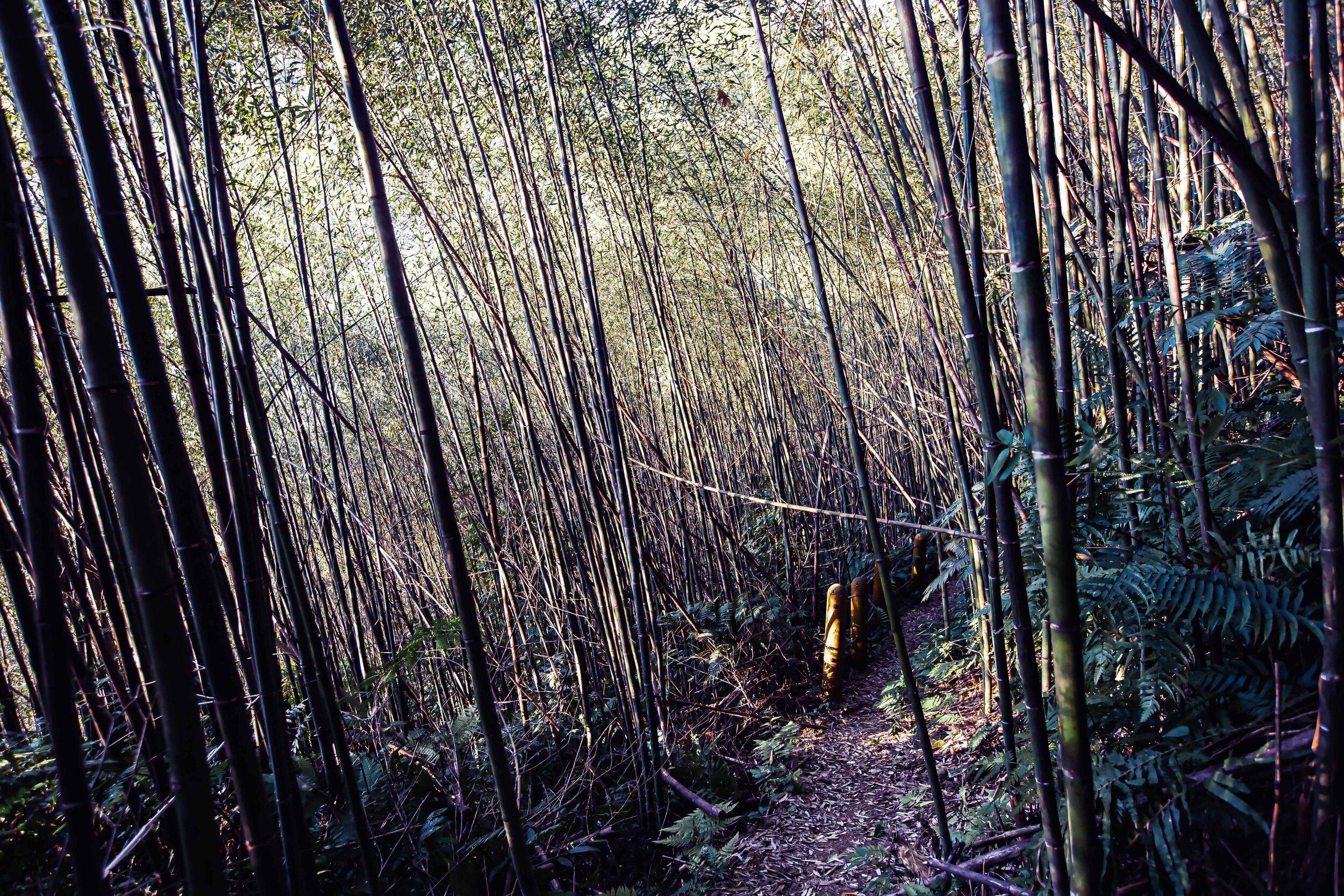It’s a rare occasion when I’m able to combine my interest in the Japanese Colonial Era with another one of my interests, Urban Exploration. Today’s article will feature a bit of both. I’m also going to be touching on an unfortunate event that took place a few short years after the Japanese left Taiwan, and has had lasting repercussions on this beautiful country.
Today I’ll be introducing an abandoned Japanese-era police outpost in the mountains that dates back to the early 1920s. More than a century old, the station has played several roles over the years, but is most notably remembered for the suppression of both the indigenous people of Taiwan, and then later against those who opposed Chinese Nationalist rule.
For some, the station is a dark reminder of an authoritarian history and the violent suppression of Taiwan’s indigenous people and the empty shell of a building that remains standing today is a fitting reminder of that history.
Recently recognized as a protected heritage building by the New Taipei City Government, funds have been available to clean up and preserve what little remains of the station. Still, it remains a skeleton of what it once was, and it doesn’t seem like there are any plans to restore any of the pieces that have been lost.
So, even though the historic police station is a somewhat obscure destination in the mountains of New Taipei’s Xizhi District, I’m not entirely convinced that I should consider it to be the type of ‘urban exploration’ that I’m usually interested in.
Sure, its an abandoned building, but its not abandoned in the same sense of other places that I visit.
I’m going to try to keep this one somewhat brief in that I’ll spend a little less time introducing the history and architecture of the building than I usually do. However, given that I’m publishing this during the annual 2/28 Memorial Holiday, I will spend a short time introducing the events that made the police station a focal point for some unfortunate incidents that have become a stain on Taiwan’s modern history.
Given that 2022 marks the 30th anniversary of what many consider the formal end of Taiwan’s four-decade long period of White Terror (白色恐怖), which saw hundreds of thousands imprisoned and a still unknown number executed by the state - it’s important that these stories continue to be told and the crimes of the past continue to come to light.
Baiyun Police Station (十三分警察官吏派出所)
When the Japanese took control of Taiwan in 1895, opposition campaigns sprouted up with the Hokkien, Hakka and Indigenous inhabitants forming armed rebellions all over the island. To quell these movements, the Japanese authorities reacted violently, and as those who opposed their rule were pushed further into the mountains, the Japanese followed suit with a militaristic presence in areas that were once thought to be uncontrollable by the previous Qing rulers.
For the first few years of Japanese rule, these opposition movements persisted around the island, but as was the case with almost every powerful colonial regime throughout history, they were violently silenced by the more powerful, and better equipped rulers.
In 1920 (大正9年), the Jusanfun Police Branch (十三分警察官吏派出所) was set up as a mountainous outpost under the direction of the Shiodome District Branch of Taihoku Prefecture’s Police Bureau (臺北州警務部七星郡警察課的汐止分室). Located in the mountains of Shiodome (汐止街/しおどめまち), or what we refer to today as New Taipei’s Xizhi District (汐止區). Geographically located at the intersection of Nangang (南港), Shiding (石碇) and Xizhi (汐止), the outpost was meant to help keep keep the ‘Kypanas’ (峰仔峙社) of the Ketagalan tribe (凱達格蘭族) under control as well as to protect the local farmers as the area was famed for its tea production as well as its coal mines.
By the 1920s Japanese rule in Taiwan had more or less stabilized, so from the time it was constructed until the end of the Second World War, not all that much happened at the station. Records as to what happened after the Chinese Nationalists took over however remain a bit convoluted as resources about the station tend to provide conflicting accounts. Some of the historical information you’ll find about the building argues that it was occupied by the police until the late 1960s, while others argue that it was instead used as a dormitory for the principal of the elementary school next door. While I wouldn’t be surprised if that were the case at some point, from everything I’ve seen I think its safe to say that the building was used as a police station and dormitory for the police until the late 1960s.
What we do know for sure is that when the tragic ‘Luku Incident’ took place in 1952 (民國41年), the station was still in use as a branch of the Xizhi Police Station.
According to the information available from the National Culture Database Management System, in addition to the educational resources provided on-site, the station was still occupied in 1962 (民國51年) by a patrol officer, two administrative officers and a military conscript. The patrol officer was fortunate enough to have his own separate housing to the rear of the station, but the others stayed within the shared-dormitory section connected to the station.
If my resources are correct, the station likely ceased operating as a police outpost in 1976 (民國65年), but it apparently wasn’t completely abandoned until 1992 (民國81年). My assumption is that during the sixteen year period from when the police left and the building was abandoned, it was probably used as a dormitory for the principal of the school next door.
If that’s the case, the accounts I’ve read could both be correct, but just not precise in the dates they provide.
Finally, in 2009 (民國98年), the Taipei County Government listed the site as a protected historic building and slated the property for simple restoration, which included cleaning up the landscape and the abandoned materials that couldn’t be saved. Despite being abandoned for more than a decade, and both the building and the landscape in terrible shape, the empty shell of the building was protected as it was atypical of the construction techniques of the era for which there are very few still remaining intact.
Unfortunately, given that what remains of the outpost is an empty shell of its former self, I’m going to provide a couple of illustrations below to offer a better description of how the station originally appeared.
Before getting into the architectural design of the station, I’m going to provide a brief timeline of historic events for the station:
Timeline:
1920 (大正9年) - Taihoku Prefecture (台北州廳) is redistricted and Shiodome machi (汐止街/しおどめまち) falls under the administration of Shichisei district (七星郡/しちせいぐん) with the mountainous area falling under Shichisei as Jusanfun (十三分 / じゅう さん ふん).
1920 (大正9年) - The 13th Branch Police Station (十三分警察官吏派出所) opens for service.
1945 (昭和20年) - The Second World War comes to an end and Japan surrenders control of Taiwan to the Chinese Nationalists.
12/29/1952 (民國41年) - Security personnel set up a blockade of the village of Luku (鹿窟), a short distance away from the station using the station for logistical purposes.
03/05/1953 (民國42年) - The blockade of the village comes to an end and the security forces leave the area.
1976 (民國65年) - The building ceases operation as a police outpost and ownership is transferred to the local school for administrative usage.
1992 (民國81年) - Having become run down, the building is completely abandoned, and is left to the elements.
08/20/2009 (民國98年) - The Taipei County government lists the station as a protected historic site (歷史建築).
Architectural Design
When I write about these historic buildings, I usually spend a considerable amount of time describing their architectural design. In this case however, I don’t really feel like I need to spend too much time on that this time as it’s currently only a skeleton of its original self, with only the concrete base remaining.
Interestingly, even though the history is rather hit-and-miss in terms of the information that is readily available, when it comes to the architectural design of the building we’re blessed with a wealth of information regarding how it would have looked more than a century ago.
Constructed in 1920 (大正9年), the station was built in an era when Japanese architects were taking inspiration from the Art Deco designs of Europe and fusing it with traditional Japanese design techniques. making use of a combination of reinforced concrete and wood in a style known as ‘Wayō secchū kenchiku’ (和洋折衷建築/わようせっちゅうけんち), or literally “Japanese-Western Eclectic Architecture,” this architectural style spread throughout Japan during the Meiji Restoration (明治維新), and continued with Emperor Taisho (大正) and his successor Emperor Showa (昭和天皇).
Essentially split into two sections, the eastern side of the building was constructed with concrete and was where the daily operation of the police station would have taken place. The roof of the building was higher than the western side and features the two-sided kirizuma-zukuri (切妻造 / きりづまづくり) style of roof design. The western side of the building on the other hand was a traditional living space for the employees of the police station and was constructed in a more traditional style featuring a beautiful four-sided yosemune-zukuri (寄棟造 /よせむねづくり) style of roof, creating a three dimensional design as illustrated below.
One of the most important architectural elements of Art-Deco style is the inclusion of flowing geometric shapes and it would be an understatement to say that architects of the time absolutely loved fusing traditional Japanese-style ‘hip-and-gable’ roofs in these designs. These geometrically complex roofs expanded upon the Art Deco style and ensured that traditional Japanese characteristics were plainly visible. So, while it may have appeared that the building consisted of two different roofs, they were actually connected with the eastern end having an arch facing outwards towards the entrance while the western side arched in the opposite direction.
Obviously, since the only part of the building that remains today is the concrete administrative section, the only part of the roof that we can see now is the (recently restored) two-sided kirizuma roof, which is constructed to look like an ‘open book’ or the Chinese character “入”.
The architecture of this section was regarded by designers as the primarily western-inspired section of the station, or the ‘youkan’ (洋館 / ようかん) with high ceilings and a spacious open interior.
When you visit today, you’ll find the outline of where the Japanese-style designed ‘wakan’ (和館 /わかん) once existed, with some of the cement pieces from the base still intact. The building itself however was demolished decades ago, and I doubt that there will be any efforts to reconstruct it in the near future. That being said, the building was constructed of wood and was a ‘shared-dormitory’ style building featuring a living space, kitchen, common area and a western-style bathroom (likely added in the 1960s).
The living space would have been connected directly to the station and employees would have been able to go back and forth during the day between the station and the residence.
As mentioned above, there also used to be a separate dorm building to the rear that housed the patrol officer, and I’m assuming his family. The building wouldn’t have been all that large, but it seems like it would have been completely covered by a beautiful tree, which would have been nice. There isn’t any record as to when that particular building disappeared, so I’m assuming that it was bulldozed around the same time as the other building, but there is little evidence that it actually existed today.
Today, the station is simply an empty shell with only a little evidence of what once existed on the grounds - The station grounds cover about 1000 square meters of land (300坪), and if you walk around you’ll be able to find other objects that once existed on the site, such as an old flag pole and the stone barriers on the hill in front of the station. If you take the time to explore and know where to look, you’ll be able to find quite a bit while walking around.
The Luku Incident (鹿窟事件)
One of the first (as well as the largest) events of the White Terror Period (白色恐怖), the infamous ‘Luku Incident' was a several month-long massacre starting on December 29th, 1952 and spread over a several month period until March 3rd 1953.
While many of the facts about what happened are still unknown, records are slowly opening up thanks to the Transitional Justice branch of the government, tasked with discovering the truth of what happened during Taiwan’s period of authoritarian one-party rule.
What we do know is a situation the authoritarian government perceived as a threat resulted in a heavy-handed response that saw thousands of police officers marching into the mountains, blockading a village for months, and ended in the arrests of hundreds of innocent people, many of whom were imprisoned on false charges, while others were executed for crimes against the state.
Official records (currently) state that more than four-hundred villagers were arrested, one hundred imprisoned and thirty-six of them were executed for charges relating to treason or espionage over the four month period. For those that were arrested, interrogation and torture was pretty much a given, and if one ultimately submitted and admitted to a crime (as many do during torture sessions), it was a death sentence.
So what caused this mess?
Reeling from their losses during the Chinese Civil War, the Chinese Nationalists were intent on eliminating anyone with communist sympathies here in Taiwan in fear that ‘collaborators’ would be able to assist those back in China in any future attack on Taiwan.
In 1949, looking for a strategic stronghold in Taiwan, the village of Luku (鹿窟) in the mountains between the port of Keelung and the capital of Taipei was selected to become a communist base of operations.
By 1950, it is estimated that the group had attracted around three-hundred followers, and named itself the “Taiwan People’s Self Defense Force” (台灣人民武裝保衛隊). In late 1952, one the members of the group was captured and gave up details of the group’s operations including those who were involved. The area was then put under surveillance, and within a month it was decided that the Security Bureau (保密局), the Security Command (保安司令部), the Taipei Garrison Command (台北衛戍司令部) and the Taipei County Police (台北縣警察局) would coordinate and dispatch a 15,000 man response to block the mountains and rout out the communist threat.
For most people Taiwan today, the incident was one of those largely forgotten events of the White Terror period - Few actually knew what happened, nor what the government did to the people of this village. For the villagers however, life in the aftermath of what happened was never able to return to normal.
For much of the 1950s, the vast majority of the villages men had disappeared, or were dead - This left only widows, children and the elderly, most of whom were geographically isolated from the rest of Taiwan. Coupled with a sense of alienation from their fellow villagers (who were forced to point fingers at each other in their confessions) mention of what happened became taboo within the community, which was renamed ‘Guangming’ (光明里) by the government in order to erase memory of what took place.
In order to further ‘punish’ the people of Luku, the coal mines were shut down and roads in and out of the village weren’t maintained, forcing many to simply pack up and leave.
When the five-decade long Martial Law era came to an end in 1987, and the nation started to transition into a multi-party democracy, the crimes of the past started to come under scrutiny with the 2-28 Incident (二二八事件) given official recognition by the government in 1991, followed by the Luku Incident a few years later.
On December 29th, 2000, the 48th anniversary of the incident, the government unveiled the Luku Incident Memorial (鹿窟事件紀念牌) at the intersection of Luku, Shiding (石碇) and Nangang (南港) as a reminder of the horrible events and the hope that the healing process could finally start after so many years.
Link: Luku Incident Memorial 鹿窟事件紀念碑 (Foreigners in Taiwan)
How does this terrible incident that took place 70 years ago relate to the Baiyun Police Station?
If you take into consideration the geographic location of Luku Village and the station, it’s easy to see why.
The station was used as a command center for some of the 15,000 armed security personnel who barricaded the village. It was also used for surveillance of the village for the month prior to the blockade.
Link: Gone but Not Forgotten: 7 Historic Sites to Learn More About the White Terror (Taiwan Scene)
Finally, as the village of Luku declined in the aftermath of the incident, the need for a police station in the area similarly became unnecessary ultimately sealing the fate of the building.
Today, the station, like the village above is an empty shell, but as we look back at the tragedies of the Luku Incident, it remains an important historic location with regard to remembering the mistakes of the past.
Getting There
Address: #373 Xiding Road, Xizhi District, New Taipei City (新北市汐止區汐碇路373號)
GPS: 25.037180, 121.641720
Okay, so there is a bit of an issue with the address above, making getting to the area a little difficult.
Coincidentally, when I attempted to visit the station, I had thought I was going to have to jump a fence or something to get in, given the directions that I had read before departure.
The address listed above is officially the address for Linsen Elementary School (林森小學), but that’s not actually where you’re going to find the entrance when you arrive. It is essentially just the closest physical address to where you’ll find the police station given that it doesn’t have an address of its own.
When you’re making your way up the very narrow mountainous Xiding Road (汐碇路), you’ll come across a sharp turn where you’ll find the entrance to the school on the left. If you’re arrived at the school, you’ll have already passed the entrance to the police station.
When the road curves, you’ll notice a stone set of stairs that ascends a tree-covered hill - from there you’ll simply walk up the hill for a minute until you arrive at the station. The problem for most people is that the station isn’t clearly marked on the road, so you really have to pay attention.
If you’re driving a car or a scooter, simply input the address above into your GPS or Google Maps and you’ll be able to find your way there from wherever you’re going. A word of advice on that matter though, if you’re driving a car and you pass the entrance to the police station, it’s going to be quite difficult to turn around on the very narrow road. You’re going to have to pay close attention to your GPS and when you see the road start to curve just before you arrive at the elementary school, pull over on the side of the road where there is a grassy area that allows visitors to park.
If you’re relying on public transportation to get to the police station, you’re in luck as there is amazingly a bus that services the (somewhat obscure) area. That being said, the bus doesn’t come all that often so you’re likely to find yourself waiting around for a while if you take that option.
The bus is #F903 from Xizhi (汐止) to Tiandao Qingxiu Temple (天道清修院), and it only services the area seven times a day which means that you’re going to have to be very careful with your timing.
From Xizhi Train Station (汐止火車站): 06:30 08:20 10:00 12:00 13:30 15:30 17:30
From Tiandao Qingxiu Temple (天道清修院): 07:10 09:15 10:40 12:40 14:10 16:10 18:10
Not wanting to rely on the bus, I rented a GoShare from Nangang Train Station (南港車站) and made my way up the mountain and back by scooter. Unfortunately the only shared scooter services you’ll find in the Xizhi area are iRent and Wemo and they’re few and far between.
If you were brave you could also rent a Youbike and make your way up the hill to the station, but the hill is quite steep and it’d be a pretty difficult ride, so I wouldn’t really recommend that method.
The New Taipei City government has invested a bit of money on the preservation of this historic Japanese-era police station, but it’s certainly not a destination that is meant to attract a lot of tourists.
If you find yourself in the area hiking one of the trails, then you should probably make the effort to stop by to check it out, however I don’t think many people are as invested in these things as I am and aren’t going to make a special effort to travel all the way there just to check it out.
References
汐止白雲派出所 (Wiki)
白雲派出所 (新北市觀光旅遊網)
歷史建築 汐止白雲派出所 (健行筆記)
汐止白雲派出所 (國家文化資產網)
白雲分駐所(出張所)的歷史點滴 (汐止文化網)
汐止.白雲古道 (Tony的自然人文旅記)
鹿窟基地案 (Wiki)
Luku Incident Memorial 鹿窟事件紀念碑 (Foreigners in Taiwan)
鹿窟事件.紀念碑.光明寺 (Tony的自然人文旅記)
Memory, Partial Truth and Reconciliation without Justice: The White Terror Luku Incident in Taiwan (Fang-Long Shih)
最大白色恐怖事件鹿窟基地案,逮捕及訊問896人,判刑及感訓112人,補償及賠償5億4,563萬4,000元,監察委員高鳳仙、楊美鈴提案糾正國防部 (監察院)
